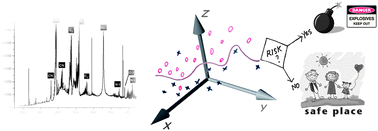New chemometrics in laser-induced breakdown spectroscopy for recognizing explosive residues
Abstract
Detection of explosives in traces is an important area for preventing terrorist attacks and for anticipating their disastrous consequences. Laser-induced breakdown spectroscopy (LIBS) has been demonstrated to be an effective analytical technique for the detection and characterization of energetic materials. However, the major obstacle in the identification of explosives is their elevated spectral similarity with those compounds that share an analogous elemental composition. Despite that a number of different chemometric methods have been developed in the past for the detection of explosives, this hurdle remains latent today. Our recent efforts have been focused on the use of an alternative chemometric approach for improving the sensitivity and selectivity of LIBS for residue explosives identification. Through the survey of the spectral responses from the analysis of a variety of organic residues (either explosive or potential confusant materials) located on the surface of a support, relationships between the optical emission behaviors of residues and their corresponding hazardous nature have been extracted. By using the original intensities of the most relevant emission signals (C : CN : C2 : H : N : O) properly projected onto 2D subspaces, different machine learning classifiers have been designed and trained. This approach has been demonstrated to be capable for the identification of organic explosive residues against several potential confusant materials when they are placed on the surface of an aluminum support. False positive and false negative rates better than 5% are achieved. These results evidence a great stride in solving this particular problem, enabling the LIBS technology as a practical tool in complex applications related to homeland security.


 Please wait while we load your content...
Please wait while we load your content...